
After setting various times on their clocks, students will record the events of the day on a "My Day" worksheet.
- Subject:
- Arts and Humanities
- Material Type:
- Lesson Plan
- Provider:
- Utah Education Network
- Date Added:
- 10/22/2013

After setting various times on their clocks, students will record the events of the day on a "My Day" worksheet.
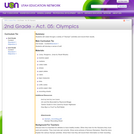
In this lesson students will rotate through a variety of "Olympic" activities and record their results.
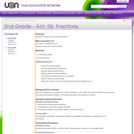
In this lesson students will explore the concept of fractions.
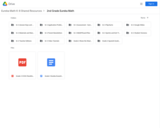
2nd Grade Eureka Math

Lesson Plan – Math Lesson Plan: Learning to Count Change 2nd grade Activity: Learning to count change: penny, nickel, dime, quarter Grade: 2nd grade Concepts: Teach the students how to recognize change and count using pennies, nickels, dimes, and quarters up to a dollar. National Standards: Math- MA 2.2.5.a. Count mixed coins to $1.00 Objectives: the objective is that the students learn how to recognize and distinguish between different American currency using change: pennies, nickels, dimes, and quarters. Criteria: The student must be able to provide evidence and knowledge of the behavior and the student is expected to learn how to count change (penny, nickel, dime, quarter) up to a dollar will a high accuracy. Multiple Intelligences: The lesson accounts for auditory, visual, and kinetic learners by having the students participate in many different strategic learning activities. Essential Question(s):1. How can learning to count change help you inside the classroom as well as outside the classroom?2. Why is learning to count change important?3. How can we use counting change in our everyday lives? Ask for examples.4. Is learning to count money and change useful to you? Conditions:The behavior should be performed within as open class discussion before moving into individual work. Students should be relaxed, engaged, and motivated to learn. Instructional Objectives: The students should be active participants while performing the behavior. Motivation: Making math fun! Incorporating something special to help them count change. Jelly beans, popcorn, (some kind of treat). Explaining how counting can be useful in everyday life. Examples: allowance, tooth fairy, birthdays). They each will earn a chocolate coin during their formative assessment. Connection to Learning:Prior knowledge would be skip-counting and counting to 100. Building on skip-counting by giving individual coins value and understanding those values and how they build to a dollar. Vocabulary:Change: a combination of coins such as pennies, nickels, dimes, and quarters.Penny: is worth 1 cent.Nickel: is worth 5 cents.Dime: is worth 10 cents.Quarter: is worth 25 cents. Materials:ComputerProjector or Smart boardThe Money Song, by Jack HartmannWorksheets: Let’s Make Change, Coins! Let’s Make ChangeCoins: pennies, nickels, dimes, quartersActivity: Race to a Dollar! And paperclipReward: Candy (of whatever reward you would like to use) Procedures:1. Introduce the subject and the objective to the class.2. Start off by asking a few questions a short pre-assessment about counting money. What previous knowledge does the class know?3. Explain the video we are going to watch that helps introduce the less. Explain how it teaches the students about money: pennies, nickels, dimes, and quarters. Let them know we are going to learn a song about money to help them remember the important facts.4. Watch the video once5. Teach the students about the song. Work on the song together as a class.6. Let the class know we are going to play a little game about making change after the video.7. Watch the video a second time and have the students sing along.8. Introduce the class activity: Race to a Dollar game9. Explain the rules to the game and how the winner gets a reward. (You can play the game anyway you would like).10. Once the game is over and the teacher feels comfortable that the class understood the lesson, pass out and explain the directions for the first or second worksheet.11. Explain the instruction and dismiss the class to work independently. This is a great time to walk about and formally assess the students independently.12. Hand out the second worksheet for homework.13. Explain that we will continue to build on this lesson in the days to follow.14. A summative assessment will be given at the end of the week. Assessment:Formative assessment - Worksheet: Coins! Let’s Make Change. The teacher will walk around and ask every student individually a questions about change in order to “buy” a chocolate wrapped quarter. Ex: In order to “buy” this candy from me how can you use different coins to make 30 cents. The student answers: 3 dimes. The teacher will help each student through the question and assess their current knowledge.Summative assessment - quiz on the lesson, how to count change focusing on (pennies, nickels, dimes, and quarters.) Accommodations/Accommodations for special needs child:Teacher will allow for one on one instruction time once the class has been dismissed to work independently. The class activity will be accomplished with a partner that and or the students will partner up with a student and they will become a team during this activity. The formative assessment will stay the same and the summative assessment will have each student's individual needs and or accommodations as stated in their IEP. Accommodations for ESL/ELL child: If necessary the teacher will have all directions and instructions written in the students dominate language as well as English to help them understand and accomplish the lesson. Resources:State Standards: https://www.perma-bound.com/state-standards.do?state=NE&subject=mathematics&gradeLevel=2https://www.perma-bound.com/state-standards.do?state=NE&subject=arts-education&gradeLevel=KYouTube: The Money Song: https://www.youtube.com/watch?v=pnXJGNo08v0Pinterest: https://www.pinterest.com/search/pins/?q=making%20change%20worksheets&rs=rs&eq=&etslf=3110&term_meta[]=making%7Crecentsearch%7Cundefined&term_meta[]=change%7Crecentsearch%7Cundefined&term_meta[]=worksheets%7Crecentsearch%7Cundefinedhttps://www.pinterest.com/pin/287597126182911466/ The Money Song | Penny, Nickel, Dime, QuarterBy, Jack Hartmann Penny, nickel, dime, quarter…Lets learnPenny, nickel, dime, quarter…Lets learn Money, money, money in my pocketMoney, money, I know how to count itMoney, money, money in my pocketMoney, money, I know how to count it What’s it worth? How much is a penny? 1 centHow much is a nickel? 5 centsHow much is a dime? 10 centsHow much is a quarter? 25 cents How much is a penny? 1 centHow much is a nickel? 5 centsHow much is a dime? 10 centsHow much is a quarter? 25 cents Money, money, money in my pocketMoney, money, I know how to count itMoney, money, money in my pocketMoney, money, I know how to count it What’s it worth? How much is a penny? 1 centHow much is a nickel? 5 centsHow much is a dime? 10 centsHow much is a quarter? 25 cents How much is a penny? 1 centHow much is a nickel? 5 centsHow much is a dime? 10 centsHow much is a quarter? 25 cents Money, money, money in my pocketMoney, money, I know how to count itMoney, money, money in my pocketMoney, money, I know how to count it Here is a penny and this is what it looks like…Penny, penny,A penny is worth? 1 centA penny is worth? 1 cent Here is a nickel and this is what it looks like…Nickel, nickelA nickel is worth? 5 centsA nickel is worth? 5 cents Here is a dime and this is what it looks like…Dime, dimeA dime is worth? 10 centsA dime is worth? 10 Cents Here is a quarter and this is what it looks like…Quarter, quarterA quarter is worth? 25 centsA quarter is worth? 25 cents Money, money, money in my pocketMoney, money, I know how to count itMoney, money, money in my pocketMoney, money, I know how to count it Money, money, money in my pocketMoney, money, I know how to count itMoney, money, money in my pocketMoney, money, I know how to count it Money, money, money in my pocketMoney, money, I know how to count itMoney, money, money in my pocketMoney, money, I know how to count it Money, money, money in my pocketMoney, money, I know how to count itMoney, money, money in my pocketMoney, money, I know how to count it

Preventing the spread of diseases is not only an Indiana Academic Standard that is required, but is applicable to keep schools and students healthy. This lesson plan is perfect for a heath teacher or general educator regarding grade 2. While this lesson is intended for Grade 2, it can be easily modified to reach younger grades or made more challenging and/or in-depth for older grades.
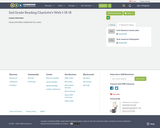
CaLee and Hollie created this for a class.

This is a Google Slide on biodiversity and then activities followed by a Google Forms quiz.
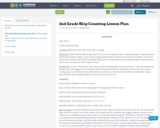
This lesson covers the concept of skip counting by 5's and 10's.
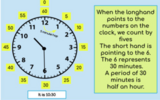
Overview:This lesson includes instructions, a video, a short story, PowerPoint, and an image. The students will practice with the teacher using the PowerPoint to go over the analog clock, minute hand, hour hand, and practice telling time. After completing the PowerPoint, the students will practice with a small analog clock.

Introduce students to the creative design process, based on the scientific method and peer review, by application of fundamental principles and learning to complete projects according to schedule and within budget. Subject relies on active learning through a major team-based design-and-build project focused on the need for a new consumer product identified by each team. Topics to be learned while teams create, design, build, and test their product ideas include formulating strategies, concepts and modules, and estimation, concept selection, machine elements, design for manufacturing, visual thinking, communication, teamwork, and professional responsibilities.

Long Description:
Authors and editors: Haley Zanga, Audrey Boraski, Alana Olendorf, Marisa Benjamin, Haley Fantasia, Simone McEwan, Jaime Marsh, Melissa Wydra, Will Trautmann, Emily Michaeles, Maddi Ouellette, Andrew Fuhs, Allie Tolles, Suki Graham, Mary Swain, Devon Audibert, Sarah Larsen, Emma Verville, Tim Brodeur, Jason Charbonneau, Christian Paparazzo, Bryce Chounard, Malisa Rai, Jennifer Rosado, Morgan Tupper
Chief Editors, final revision: Haley Zanga, Audrey Boraski, Alana Olendorf
Chief Editor, first draft: Andrew Fuhs
Managing Editors and Editorial team leaders, first draft: Bryce Chounard, Emily Michaeles, Maddi Ouellette
Word Count: 40031
(Note: This resource's metadata has been created automatically as part of a bulk import process by reformatting and/or combining the information that the author initially provided. As a result, there may be errors in formatting.)
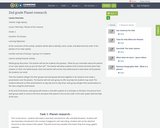
Teacher: Angie ApautyLesson Title/Topic: Planets of the UniverseGrade: 2Duration: 50 minutesLearning Objectives: At the conclusion of this activity, students will be able to identify, name, locate, and determine the order of the planets of our solar system. Number and Size of Groups: 5 groups of 3 studentsLearner Activity/Teacher Activity:Whole group discussion. The teacher will ask the students the question, "What do you remember about the planets of our solar system and can you list them all?". The teacher will allow students time to think and write down their answers on their mini white boards. Next, the teacher will use the main white board to write down all the planets the students can recall. Then the students will get into their groups and each group will work together to do research and create a presentation over the planets. The teacher will visit each group to offer any help the students may need. The students will work on their presentations on day two and on day three, each group will give their presentations to the class using the smart board.At the end of the lesson, each group will receive a card with a planet on it and tape on the back. One person from each group needs to come to the front and place their planet in the correct order in the solar system with the help of the class.
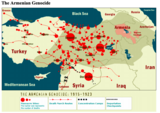
The Two Day plan is intended to be completed in two fifty-minute class periods, with 2 homework assignments, the lesson includes the definition of genocide, historical background on the Armenian case, a review of other major genocides, a short national TV news piece, and readings from survivor testimonies.The Ten Day lesson includes film, primary documents, and the UN Declaration of Human RightsPart II, examines the economic developments of competing empires with subsequent loss of territory and rise of state repression over time. The final product is a colorful timeline linking seemingly disparate elements into a visible pattern. Students will also gain the opportunity to place the Armenian Genocide next to other acts of genocide and human rights abuses throughout history.Part III builds on the basic information learned in Part I and the larger historic and political overview gained in Part II. Students can participate in a mock re-enactment of the 1921 trial of Soghomon Tehlirian, who assassinated the mastermind of the Armenian Genocide and was later acquitted. The mock trial allows students to develop historical empathy with the victims and survivors of the Armenian Genocide.
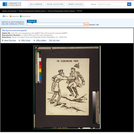
Poster showing Uncle Sam in coat labelled "Liberty Bond" punching the Kaiser. Prepared by Liberty Loan Committee, 120 Broadway, New York. Forms part of: Willard and Dorothy Straight Collection.
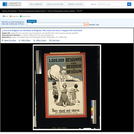
Poster showing a woman in a helmet (Minerva, personification of Britain?) caring for a mother and children. Printed by Crowther & Goodman, 124 Fenchurch St., E.C. Title from item.

An interactive applet and associated web page that demonstrate the properties of a 30-60-90 triangle. The applet shows a right triangle that can be resized by dragging any vertex. As it is dragged, the remaining vertices change so that the triangle's angles remain 30 degrees, 60 degrees and 90 degrees The text on the page points out that the sides of a 30-60-90 triangle are always in the ratio of 1 : 2 : root 3 Applet can be enlarged to full screen size for use with a classroom projector. This resource is a component of the Math Open Reference Interactive Geometry textbook project at http://www.mathopenref.com.

These lesson plans and activities were developed by Janine Darragh, Gina Petrie, and Stan Pichinevskiy and were previously located on the Reaching for English app. Created for K-12 English teachers in Nicaragua, the materials may be used and adapted for any country's specific context and needs.

An immunohematology teaching case with questions. For use or adaption with teaching/examination resources for transfusion medicine, immunohematology, and blood banking.
